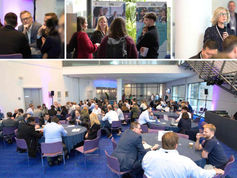Circular economy in action: Innovative approach to building cooling
With air-conditioning units increasingly featuring in contemporary building designs for energy efficiency, poor operation often counters the very benefits they promise. A startling study by Arup highlights a 20-40% performance gap in global real estate. Adding to this, research from Singapore indicates that up to 30% of building owners over-estimate equipment needs with future expansion in mind, resulting in between 35-50% of air-con equipment lying dormant.

Enter Kaer Air’s innovative solution. Rather than placing the responsibility on building owners to perfect the specifications, Kaer asks for just one input: the desired indoor temperature. They then take over the entire process — design, installation, and operation.
The traditional capital expenses for building equipment are substituted with a straightforward pay-per-use system centred on actual consumption.
A significant advantage of Kaer’s system is its modular design, which facilitates the addition or removal of air-con units as needed. This is further enhanced by integrating AI and IoT technology to fine-tune the operation of cooling systems.
Why switch to Cooling-as-a-Service (CaaS)?
Financial savings:
Energy costs: CaaS can slash cooling energy consumption by 20-70%. A prime example is INSEAD, Singapore, where energy use plummeted by 70% in just six months, bolstering the institution's sustainability credentials.
Infrastructure costs: The modular approach mitigates the risk of over-specifying equipment, liberating space and eliminating the expense on superfluous equipment.
Environment and climate:
Optimising air-con systems results in minimised material extraction and carbon emissions linked to building cooling.
Moreover, as Kaer's profits are tied to energy savings, there's an inherent incentive for them to ensure efficient operations. In numerous countries, staying below specific energy consumption thresholds can result in cost reductions, presenting a win-win for both Kaer and its clientele.
Circular Economy & renewable energy integration
The circular economy promises a reduction in electricity demand, making a renewable energy-powered world more feasible. A compelling case in point is the synergy between a Kaer Air system and a solar farm at 1 Elpro Park, Pune, India.
This innovative business park has several buildings equipped with Solar PV arrays. Kaer Air introduced a centralised chiller station here, optimised with AI to consider the demand profiles of buildings and the solar panels' generation variability. The resultant energy savings amounted to over 200,000 kWh — enough to power 200 typical Indian households.
Looking ahead, India expects 400 million new urban residents in the next three decades. With urbanisation and increasing prosperity, the demand for air-con will surge.
For sustainable growth, without overwhelming costs to both wallets and the environment, service models akin to Kaer Air's approach are essential. 1 Elpro Park stands as a beacon, guiding one of the world's most rapidly expanding air-con markets.






Commentaires